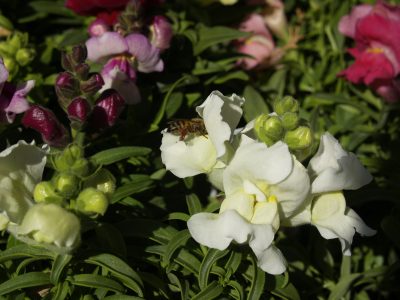When is the best time to move a rose bush or other plants?
Thanks to Ramona Rogahn for this great question!
Late fall through early winter is best to move roses, along with other shrubs and trees, because they are dormant at this time. In times of drought, be sure to moisten their soil a few days in advance. You want them hydrated before you move them. Moisten the new planting area, too, so it’s receptive to water.
You can also root prune in advance, a great technique to get them ready to move. A month or two before you want to make the move, take your shovel and actually dig into the soil around your plant. Severing the roots pushes your plant to make new roots near the surface.
If you need to move it and don’t have time to do that, be sure to scrape the soil around it and dig all around it to get the root ball out intact. Again, it helps to moisten the soil a few days in advance. Have your new hole ready. You may have to make some adjustments to it on moving day, but you want to get your transplant back in the ground as soon as possible. With a larger plant, have a tarp or sheet ready to haul it safely.
Once the plant is moved, be sure to give it extra water, but don’t drown it. Keep the soil moist but not soggy. Mulch to retain moisture, but do not mulch against the base of the plant.
Also, when you move a plant, be sure not to bury it too deep. With roses, keep its bud union (the knobby part at the base of the plant) above ground. With trees, make sure that the root flare (wide part at bottom) is above ground. With shrubs, do not bury them below where they were planted before.
When to move a stressed plant? We’re tempted to move plants in times of stress of summer heat and drought. This kindness is not a good move. Even if plants are suffering in heat and drought, we don’t want to move them until we have cool days and the plants are going dormant. They are not well hydrated, but you are also separating the plants from their roots, which is their only source of water. If you simply must move them, you will need to give them extra water and protection from the sun. If possible, pot them into containers, keep them in semi-shade, and re-plant when things are cooler.

 Sharon Lovejoy
Sharon Lovejoy Daphne Richards
Daphne Richards
 Trisha Shirey
Trisha Shirey